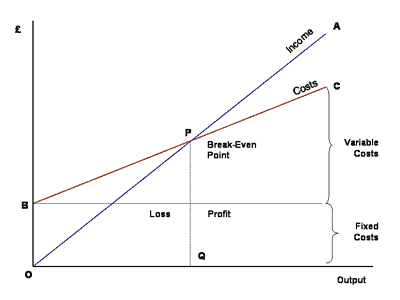 The motto of any business is profit. “At what point will my company start making a profit? When will I be able to take home my salary from my company?” These are the questions asked by all new entrepreneurs. To give a fair idea about when your company’s marketing and sales graph will show an upward curve, we will discuss the break-even point and break-even analysis.
The motto of any business is profit. “At what point will my company start making a profit? When will I be able to take home my salary from my company?” These are the questions asked by all new entrepreneurs. To give a fair idea about when your company’s marketing and sales graph will show an upward curve, we will discuss the break-even point and break-even analysis.
What is Break-Even Analysis?
When the revenue of the company is enough to cover all its expenses, then you can safely say that your company has reached the break-even point. At this point, there is neither loss nor profit. However, the break-even point is a very important marketing tool to formulate in order to strategize a way to calculate the net profit of your company. The impact of the marketing strategies is determined by the dynamics of the break-even point and the break-even margin. While discussing about the break-even figures, fixed and variable costs have to be mentioned.
How to Calculate the Break-Even Point?
The simple formula to calculate break-even point is given below
Break-even Point = Fixed Costs/ (Unit Selling Price – Variable Costs)
The result obtained using this calculation will let you know how many units of products you need to sell to achieve the break-even point. The end result of the break-even point is used to analyze and revise your business plans. This is known as break-even analysis.
To apply break even point formula, you should know what Fixed costs, Variable costs and Average/selling price per unit are.
- Fixed Costs – The expenses such as rent, administrative payroll, deposits or contingency funds that do not change from month to month regardless of how many units you managed to sell is known as fixed cost. “Be sure to include everything. People forget about things like deposits or contingency funds, which can add up to a sizable amount,” says Jerry Chautin, business mentor in Atlanta and Sarasota, Florida.
- Variable Cost – The expenses that are likely to rise or fall depending on the volume of your sales is known as variable cost. This will include your inventory, packaging and shipping and sales commissions. To get a fair idea about your variable costs, you should talk to the vendors and the trade associations of your area. Sometimes other business owners in your industry can also help you get an approximate estimate.

- Selling / Average price – This is where market research comes in. You should study the price of your competitors before you fix the price of your product. “You can look at pricing from many different ways. How’s your competition pricing it? Do you want to be at the midpoint, higher end, or lower end? I see people pricing earrings at three times what their competitors are charging. Why would anyone buy that?” says Gwendolyn Wright, a small business coach with The Wright Consultants in San Francisco.
Break-even analysis for small business owners and marketing managers will help to compare the various cost structures and prices before making their business plans and marketing strategies. Using this relevant information, you can lower the fixed cost, pull out the product from the market or spend more to revamp your advertisements and marketing techniques.


